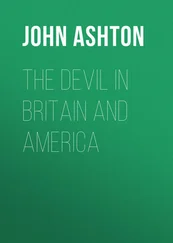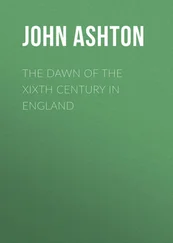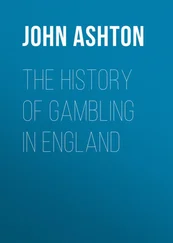John Aston Warder - American Pomology. Apples
Здесь есть возможность читать онлайн «John Aston Warder - American Pomology. Apples» — ознакомительный отрывок электронной книги совершенно бесплатно, а после прочтения отрывка купить полную версию. В некоторых случаях можно слушать аудио, скачать через торрент в формате fb2 и присутствует краткое содержание. Жанр: foreign_prose, Биология, foreign_edu, foreign_antique, на английском языке. Описание произведения, (предисловие) а так же отзывы посетителей доступны на портале библиотеки ЛибКат.
- Название:American Pomology. Apples
- Автор:
- Жанр:
- Год:неизвестен
- ISBN:нет данных
- Рейтинг книги:5 / 5. Голосов: 1
-
Избранное:Добавить в избранное
- Отзывы:
-
Ваша оценка:
- 100
- 1
- 2
- 3
- 4
- 5
American Pomology. Apples: краткое содержание, описание и аннотация
Предлагаем к чтению аннотацию, описание, краткое содержание или предисловие (зависит от того, что написал сам автор книги «American Pomology. Apples»). Если вы не нашли необходимую информацию о книге — напишите в комментариях, мы постараемся отыскать её.
American Pomology. Apples — читать онлайн ознакомительный отрывок
Ниже представлен текст книги, разбитый по страницам. Система сохранения места последней прочитанной страницы, позволяет с удобством читать онлайн бесплатно книгу «American Pomology. Apples», без необходимости каждый раз заново искать на чём Вы остановились. Поставьте закладку, и сможете в любой момент перейти на страницу, на которой закончили чтение.
Интервал:
Закладка:
Crops have also been sown from some of these trees, but a smaller proportion of the seedlings thus produced were good fruits, than when the first seeds were used—this Mr. Brayshaw considers confirmatory evidence of the theory, though he appears to feel confidence in the varieties already in use, most of which had almost an accidental origin.
He thinks the result would have been more successful had the blossoms been protected from impregnation by other trees, and recommends that those to be experimented with should be planted at a distance from orchards, so as to avoid this cross-breeding, and to allow of what is called breeding in-and-in. If this were done, he feels confident that "the seedlings would more nearly resemble the parent, and to a certain extent would manifest the tendency to improvement, and that from the earliest ripened fruits, some earlier varieties would be produced, from those latest ripening, later varieties, from those that were inferior and insipid, poor sorts would spring, and that from the very best and most perfect fruits we might expect one in one thousand, or one-tenth of one per cent., to be better than the parent." This diminishes the chance for improvement to a beautifully fine point upon which to hang our hopes of the result of many generations of seedlings occupying more than a lifetime of experiments.
Mr. Brayshaw, citing some of the generally adopted axioms of breeders of animals, assumes that crosses , as of distinct races, will not be so likely to produce good results, as a system of breeding in-and-in, persistently carried out. This plan he recommends, and alludes to the quince and mulberry as suitable species to operate upon, because in them there are fewer varieties, and therefore less liability to cross-breeding, and a better opportunity for breeding in-and-in. He also reminds us of the happy results which follow the careful selection of the best specimens in garden flowers and vegetables, combined with the rejection of all inferior plants, when we desire to improve the character of our garden products, and he adopts the views of certain physiologists, which, however, are questioned by other authorities, to the effect that violent or decided crosses are always followed by depreciation and deterioration of the offspring.
The whole communication referring to these experiments, which are almost the only ones, so far as I know, which have been conducted in this country to any extent, to verify or controvert the Van Mons' theory, is very interesting, but it is easy to perceive that the experimenter, though apparently very fair, and entirely honest, has been fully imbued with the truth and correctness of the proposition of Van Mons, that the first ripened seed of a natural plant was more likely to produce an improved variety, and that this tendency to improvement would ever increase, and be most prominent in the first ripened seeds of successive generations grown from it.
The theory of Van Mons I shall not attempt in this place to controvert, but will simply say that nothing which has yet come under my observation has had a tendency to make me a convert to the avowed views of that great Belgian Pomologist, while, on the contrary, the rumors of his opponents, that he was really attempting to produce crosses from some of the best fruits, as our gardeners have most successfully done in numerous instances, in the beautiful flowers and delicious vegetables of modern horticulture, have always impressed me with a color of probability, and if he were not actually and intentionally impregnating the blossoms with pollen of the better varieties, natural causes, such as the moving currents of air, and the ever active insects, whose special function in many instances appears to be the conveyance of pollen, would necessarily cause an admixture, which, in a promiscuous and crowded collection, like the "school of Van Mons," would at least have an equal chance of producing an improvement in some of the resulting seeds.
The whole subject of variation in species, the existence of varieties, and also of those partial sports , which may perhaps be considered as still more temporary variations from the originals, than those which come through the seeds, is one of deep interest, well worthy of our study, but concerning which we must confess ourselves as yet quite ignorant, and our best botanists do not agree even as to the specific distinctions that have been set up as characters of some of our familiar plants, for the most eminent differ with regard to the species of some of our common trees and plants.
RUNNING OUT OF VARIETIES
It has been a very generally received opinion among intelligent fruit-growers, that any given variety of fruit can have but a limited period of existence, be that longer or shorter. Reasoning from the analogies of animal life this would appear very probable, for it is well known that individuals of different species all have a definite period of life, some quite brief, others quite extended, beyond which they do not survive. But with our modern views of vegetation, though we know that all perennial plants do eventually die and molder away to the dust from whence they were created, and that many trees of our own planting come to an untimely end, while we yet survive to observe their decay, still, we can see no reason why a tree or parts of a tree taken from it, and placed under circumstances favorable to its growth from time to time, may not be sempiternal. Harvey has placed this matter in a correct light, by showing that the true life and history of a tree is in the buds, which are annual, while the tree itself is the connecting link between them and the ground. Any portion of such a compound existence, grafted upon another stock, or planted immediately in the ground itself and established upon its own roots, will produce a new tree like the first, being furnished with supplies of nourishment it may grow indefinitely while retaining all the qualities of the parent stock—if that be healthy and vigorous so will this—indeed new life and vigor often seem to be imparted by a congenial thrifty stock, and a fertile soil, so that there does not appear to be any reason why the variety should ever run out and disappear.
The distinguished Thomas Andrew Knight, President of the London Horticultural Society, was one of the leading advocates of the theory that varieties would necessarily run out and disappear as it were by exhaustion.
In his Pomona Herefordiensis, he tells us that "those apples, which have been long in cultivation, are on the decay. The Redstreak and Golden Pippin can no longer be propagated with advantage. The fruit, like the parent tree, is affected by the debilitated old age of the variety." And in his treatise on the culture of the apple and pear, he says: "The Moil and its successful rival, the Redstreak, with the Must and Golden Pippin, are in the last stage of decay, and the Stire and Foxwhelp are hastening rapidly after them." In noticing the decay of apple trees, Pliny probably refers to particular trees, rather than the whole of any variety, when he says that "apples become old sooner than any other tree, and the fruit becomes smaller and is subject to be cankered and worm-eaten, even while on the trees."—Lib. XVI, Chap. 27.
Speechly combated the views of Mr. Knight, and says: "It is much to be regretted that this apparently visionary notion of the extinction of certain kinds of apples should have been promulgated by authors of respectability, since the mistake will, for a time at least, be productive of several ill consequences."
Some of the old English varieties that were supposed to be worn out or exhausted, appear to have taken a new lease of life in this country, but we have not yet had a long enough experience to decide this question. Many of the earlier native favorites of the orchard have, for some reason, disappeared from cultivation—whether they have run out, were originally deficient in vigor, or have merely been superseded by more acceptable varieties, does not appear.
Читать дальшеИнтервал:
Закладка:
Похожие книги на «American Pomology. Apples»
Представляем Вашему вниманию похожие книги на «American Pomology. Apples» списком для выбора. Мы отобрали схожую по названию и смыслу литературу в надежде предоставить читателям больше вариантов отыскать новые, интересные, ещё непрочитанные произведения.
Обсуждение, отзывы о книге «American Pomology. Apples» и просто собственные мнения читателей. Оставьте ваши комментарии, напишите, что Вы думаете о произведении, его смысле или главных героях. Укажите что конкретно понравилось, а что нет, и почему Вы так считаете.












